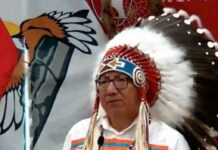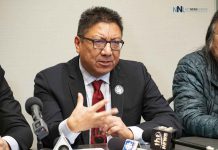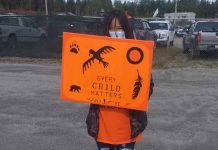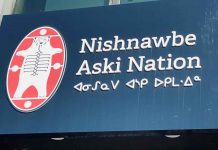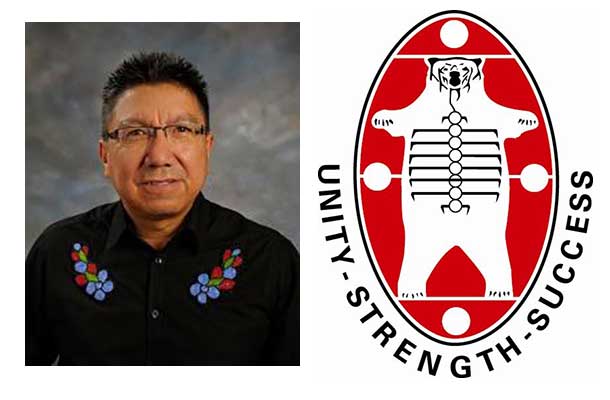
OTTAWA – Nishnawbe Aski Nation (NAN) Deputy Grand Chief Alvin Fiddler says a report by the Auditor General released today is a scathing example of how the perception in Ottawa is far from the reality of what’s happening at the community level when it comes to access to and the delivery of health care services in remote First Nations.
“The Auditor General’s report shows how First Nations living in remote communities are severely marginalized when it comes to access and the delivery of health care services,” said Deputy Grand Chief Alvin Fiddler at press conference in Ottawa. “This report documents the continued failure by Health Canada to address the heath care needs of First Nations communities, which has resulted in the health of the First Nations people being considerably poorer than that of the rest of the Canadian population.”
The Auditor General conducted an independent examination of selected health services and benefits to First Nations in Ontario and Manitoba to determine the accessibility of federal health services in remote communities. Officials visited three remote NAN First Nations (Deer Lake, Mishkeegogamang, North Caribou Lake) to gain a community perspective on the delivery of clinical and client-care services.
The Auditor General has concluded that Health Canada did not take into account community health needs when allocating support to remote First Nations, and had not implemented its objective of ensuring that First Nations individuals living in remote communities have comparable access to clinical and client care services as other provincial residents living in similar geographic locations.
Specifically, the Auditor General found that Health Canada:
- did not ensure that nurses had completed mandatory training courses;
- had not put in place supporting mechanisms for nurses who performed some activities beyond their legislated scope of practice;
- could not demonstrate whether it had addressed nursing station deficiencies related to health and safety requirements or building codes;
- had not assessed the capacity of nursing stations to provide essential health services;
- did not sufficiently document the administration of medical transportation benefits;
- did not take into account community health needs when allocating its support;
- did not compare access to health services in remote First Nations communities to access in other remote communities;
- lacked sufficient documentation to demonstrate that medical transportation benefits were administered in accordance with selected principles of the 2005 Medical Transportation Policy Framework; and
- reports that while the life expectancy of the First Nations population increased between 1980-2010, it was about eight years shorter than other
Community leaders have identified several major bureaucratic obstacles in the “Patient Pathway” that sick and injured people have to navigate in order to receive care. For example, a patient experiencing heart attack symptoms may have to wait up to 24 hours for diagnosis. Once a diagnosis is made, a request for medical evacuation must be processed for authorization for transportation to a health centre in a major urban centre. Medivac flights are frequently cancelled due to poor weather, so transportation can be delayed indefinitely stranding the patient without access any care. This delayed access to care frequently leads to tragic consequences.
Two four-olds from NAN First Nations passed away last year from issues relating to strep throat, a relatively minor ailment that any child in an urban area could easily be treated from with a quick trip to a doctor’s office or emergency room. Tragically, neither child received adequate medical attention in time.
“The deaths of these children are a shocking indictment of a broken health care system that this government does not appear willing to fix,” said Fiddler. “It is unacceptable that our youth continue to die in our communities for lack of basic health care, and it is unacceptable that inequitable services and second-class citizenship of First Nations living on-reserve has become normalized.”
The majority of NAN’s 49 First Nations are accessible by air only. There are no resident physicians in these remote communities. Access to care ranges from a nursing station staffed by nurse practitioners in larger communities to a single community health representative in smaller communities that cannot perform clinical work.
There are no 911 services in remote First Nations. The barriers faced in the delivery of health care causes undue suffering and countless losses due to a lack of early diagnosis procedures and equipment, local emergency response and medevac issues, jurisdictional ambiguity, insufficient funding of community-based programs, and a chronic shortage of intervention and community-based detoxification, treatment and aftercare programs.
NAN looks to the federal government to work with First Nations on a course of action to implement the Auditor General’s recommendations.


